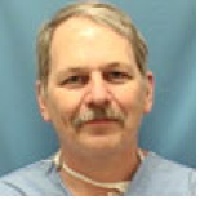
Dr. Steven McCornack D.O.
Anesthesiologist
5818 Wilmington Pike Suite 180 Centerville Ohio, 45459About
Steven William McCormack, DO, MHSA, has a private practice in Centerville, Ohio. He specializes in various consulting techniques for anesthesia procedures. Dr. McCormack also holds a Master of Health Science Administration, specializing in the various types of health care administration, their procedures and billing administration curriculums.
Education and Training
University of Health Sciences
Board Certification
American Board of Anesthesiology - Anesthesiology
Provider Details

Dr. Steven McCornack D.O.'s Expert Contributions
Can I buy local anesthetic?
The answer is yes, at least for topical local anesthetics. However, local anesthetics intended for intramuscular, subcutaneous, or intravenous use require a doctor’s prescription or the equivalent in most cases. READ MORE
Is anesthesia safe for babies?
The absolute risk of anesthesia is very minimal. However, one should always consider the risks, benefits, and alternatives when considering treatment options. I am sure that this has been done in your child’s case. Most of the risk involved in surgery is from the actual surgical procedure. I like to remind people that in terms of absolute risk, driving in to the hospital is more risky than an anesthetic. Many children with severe medical problems have uneventful anesthetics every day. Good luck! READ MORE
What is the purpose of hospice anesthesia?
I hope that I am interpreting your question correctly. The purpose of anesthesia in any setting is the prevention or relief of pain for the benefit of the patient in question. In a hospice setting, this may mean keeping the patient’s pain level tolerable or making them comfortable so that they can enjoy their limited time as much as they are able. READ MORE
What anesthesia is best for children under 12?
The ‘best’ choice of anesthesia always takes into account the risks, benefits, and alternatives in relation to both your child and the surgical procedure involved READ MORE
Do you have to be intubated for general anesthesia?
With anesthesia, as well as any medical procedure or treatment, physicians are trained to consider the risks, benefits, and alternatives when formulating an anesthesia care plan. Current guidelines ask that we do this in conjunction with the patient and/or the patient’s advocates. Depending on your daughter’s physical condition and medical problems, and considering the type of surgery she may be having, there may be alternatives to general anesthesia or to general anesthesia with endotracheal intubation. One alternative to endotracheal intubation during general anesthesia might be use of a laryngeal mask airway LMA or other supraglottic airway device. You might want to consult with your anesthesia care team prior to surgery to see if this approach would be appropriate for her specific needs. READ MORE
How long do the effects of general anesthesia last?
Many of the modern anesthetic agents, both inhalational and intravenous, have been selected for their short duration of action. I don't know the details of your mother's condition or type of surgery ... procedure, age, or general health, so this answer will be necessarily simplified. If she has pre-existing medical conditions, please let your anesthesia provider know. The anesthetic plan can be tailored to her specific needs and condition. Also, if the facility has access to the BiSpectral or BIS monitor, that can be used to adjust the dose of medication to her specific needs during surgery. Most patients undergoing a general anesthetic will be awake very quickly after surgery (usually 10-30 minutes) although they may be groggy for a period of time. Again, this depends on a lot of different factors (type of procedure, length of anesthesia, use of supplemental anesthetics) and how much post-operative medication they require. Use of pre-operative regional anesthetics or peripheral nerve blocks may also lessen general anesthetic requirements and allow other modifications in technique. We generally say not to drive or take a math test for 24 hours because some of the effects of general anesthesia affect the decision making portions of the brain longer than general wakefulness. Occasionally, some patients may experience some cognitive impairment that lasts beyond this initial 8-24 hour period after surgery. This is pretty rare and may indicate some underlying cognitive impairment previously unrecognized. This is an area of concern for both anesthesiologists and patients (and their families). This impairment is almost always temporary and improves over time. It is an area of intense study, but the causes and mechanisms have not been fully worked out yet. READ MORE
How long does it take for sedation to wear off?
There are a number of factors which influence the endpoint for sedation. Choice of sedative medication is the most obvious, along with the dosage used. In general, anesthesiologists recommend that you do not drive or perform other complex tasks or make decisions for 24 hours. You may seem quite lucid shortly after the procedure but sedation often influences higher cognitive centers used in decision making and judgment. If you have specific concerns, ask your oral surgeon and/or anesthesia provider for further guidance. Good luck! READ MORE
What type of anesthesia is used for cataract surgery?
Most cataract surgery is done with topical sedation. Drops in the eye will numb the outer chamber of the eye while the surgery is completed. Many locations will offer some sort of sedation to make the patient more comfortable during the procedure. If you have special needs or considerations, let your surgeon or anesthesia provider know in advance READ MORE
Are you asleep during a colonoscopy?
Colonoscopies are performed with or without anesthesia. I recommend with anesthesia. Some endoscopists give their own sedation... often midazolam (Versed) and fentanyl. This is usually given through an intravenous line. Adding an anesthesia provider to administer propofol via the intravenous line will normally increase the cost to the patient and/or the insurance provider. Propofol anesthesia for colonoscopy is usually considered the most preferable method according to patients due to the rapid onset, clearance, and lack of side effects. If you have propofol administered for the procedure you should have no memory of the colonoscopy being performed. Ask your endoscopist what type of anesthesia they provide and negotiate from there. Good luck! READ MORE
Can I drive after a local anesthetic?
Assuming that the local anesthetic is within the dose range allowed, and the affected body part is not at risk by the act of driving, there is no medical reason why you could not drive... assuming you are a credible driver READ MORE
Do you need general anesthesia for endoscopy?
Endoscopy can be done with mild sedation, heavy sedation, or general anesthesia. The endoscopists often have their own preference as to how they prefer to do them. One issue is that many hospitals do so many endoscopes that there would not be enough anesthesia providers available to do all the procedures. As the patient, you can make your preferences known and ask what technique is commonly used at your facility. If you have a strong preference, discuss this with you endoscopist so that it may be properly scheduled. One common technique is to use a drug called propofol intravenously because it is provides short acting unconsciousness without causing nausea. It is almost always administered by an anesthesia provider. Sometimes it is done with sedation of midazolam and/or a short acting narcotic like fentanyl. In any case, be sure to let your doctor know if you have specific fears or medical issues which may require special consideration. Good luck! READ MORE
Is CT scan done under general anesthesia for adults?
Options for CT scans include sedation and general anesthesia. Most scans are done without anesthesia. You would need to arrange this ahead of time. Often times, a rehearsal or observing the process is reassuring enough. Distraction with music is frequently helpful. Good luck! READ MORE
Does anesthesia cause memory loss?
General anesthesia or even sedation can cause memory loss, particularly in older patients. Most often, the effect is temporary. Other times it becomes more noticeable although it may be present prior to surgery. As you might imagine, it is a very difficult thing to study. In addition, standard preoperative consents and discussions do not necessarily bring out this point as well as it should READ MORE
Which anesthesia is used during abdominal hernia surgery?
The choice of anesthesia in surgery is a function of several factors. One is the location of the surgery. Another is the need for muscle relation. A third is the preference of the surgeon and the patient. Pre-existing medical conditions may also affect the decision. In the case of an abdominal hernia, the size and location of the hernia will Influence anesthesia choice. Some hernias can be fixed with just local anesthetic infiltrated in the area, although sedation is frequently used. If the hernia is waist high or below, a regional anesthetic such as spinal anesthesia might be a consideration. A general anesthetic is a common choice, particularly for large hernias and hernias above the umbilicus (upper abdominal hernias). Your surgeon and your anesthesiologist should discuss the appropriate options with you prior to surgery and get your informed consent for the anesthesia plan. Good luck with your procedure! READ MORE
How long will I be under general anesthesia?
Modern anesthesia monitoring systems and surgical techniques make this fear extremely unlikely of ever occurring. Your vital signs will be monitored continuously during your surgery. If you were to begin to "wake up," there would be changes in your vital signs which would indicate to the anesthesiologist that you need more medication. In addition, there is a "consciousness monitor" which can be used to determine how asleep you are during the case. Rest assured that you will not remember anything during surgery. Let your anesthesia team know that you have this fear so that they will be able to demonstrate the monitoring systems and reassure you. Good luck with your procedure! READ MORE
Is a CT scan done under anesthesia?
It would be very unusual to do a CT scan with sedation. There are some different strategies to reduce nervousness. They might give him a dry run with the machine off to get used to the idea. Be sure to arrive early and let the technicians know of your son’s concerns READ MORE
Is local anesthesia sometimes used for transplant surgery?
Types of anesthesia may vary based on physician and patient preference, but almost all kidney transplants are done under general anesthesia. If you do not want to have general anesthesia, you may wish to ask about other options, but most often it is done with general anesthesia. READ MORE
What is the recovery time for "trigger finger?"
Trigger finger is usually a very short procedure. It can be done without anesthesia (not recommended). There are several other options which you can choose from. Local anesthesia is an option, with or without sedation. A regional anesthetic, either intravenous (Bier Block) or nerve block, is also a possibility. A general anesthetic is also a possibility. Any sedation or general anesthetic will require a period of recovery which varies with the type of anesthesia and the medications used. Generally, it lasts for a brief period of time (several hours). It is usually recommended not to work or drive for 24 hours if you have a general anesthetic or sedation. You can ask your anesthesia provider to accommodate your own concerns in forming your anesthesia plan. READ MORE
Can anesthesia lead to gastric troubles?
It is certainly possible that a general anesthetic could cause disruption of normal digestive function. Without knowing your history and the type of surgery, it is only speculation. Many other factors may have contributed such as medications given, administration or antibiotics, pain medication, positioning during surgery, the type of surgery, disruption of feeding and diet, and the location of the surgery. Chances are that there may be multiple reasons for this change. You may want to consult your surgeon and/or anesthesiologist if you are concerned. READ MORE
Does local anesthesia also make one drowsy?
Often times, patients receiving local anesthetics may get additional medications which might be responsible for drowsiness. Local anesthetic injected into any tissue will find its way into the bloodstream and circulate in the body. At certain concentrations it can cause lightheaded ness, drowsiness, or even a seizure. Physicians and dentists know this and keep the total amount of local anesthetic within safe levels when injecting. READ MORE
Areas of expertise and specialization
Faculty Titles & Positions
- National Speaking -
Internships
- Mount Clemens General Hospital
Professional Society Memberships
- American Osteopathic College of Anesthesiology, American Society of Anesthesiology
Articles and Publications
- Few Articles Published
What do you attribute your success to?
Good Mentors
Hobbies / Sports
- Music, Theater, Exercise, Sports
Dr. Steven McCornack D.O.'s Practice location
BELLEFONTAINE, OH 43311Get Direction
Practice At 1 Wyoming St 3 Fl Anesthesia Dept
1 Wyoming St 3 Fl Anesthesia Dept -Dayton, OH 45409Get Direction
Dr. Steven McCornack D.O.'s reviews
Write ReviewRecommended Articles
- The Joys and Challenges Nephrology Nurses Face
What Exactly Comes With Nephrology Nursing?Patients who are suffering with kidney issues and needed dialysis are all too familiar with this type of nursing. Nephrology nurses are offering a very specific skill that should not be taken for lightly. Even if an individual is not needing assistance at...
- Do You Have Alzheimer’s?
Are you forgetting things frequently? Are you confused with the roads you have once driven a million times on? Are you worried about your forgetfulness? Or one of your loved ones?Simply forgetting a name or the reason why you just walked in to the kitchen does not mean you have Alzheimer’s....
- Different Types of Physicians Explained
Doctors or physicians are categorized according to different factors including medical specialties and subspecialties. Most doctors specialize in a specific area of medicine. This article provides a summary of the different types of doctors in the medical field. AllergistsAllergists are also...
- What Is the Epiglottis?
What is Epiglottis?Epiglottis is a elastic flap of tissue that is shaped like a thin leaf and situated at the root of the tongue. It protects the opening between the vocal cords, known as the entrance of the glottis. Epiglottis is covered with mucous membrane, which is a yellow elastic cartilage...
- Recovery After a Laminectomy
Laminectomy is a surgical procedure done for the removal of the lamina, bone spurs, and ligaments that may be putting pressure on your spinal nerves and causing lower back pain. The procedure is said to be one of the most commonly performed back surgeries. Below is a detailed information on what...
- What Are the Risks of Laminectomy?
Your doctor will first attempt to give you other alternative treatments before recommending surgery. If your back pain still persists after treatment, your doctor may suggest for surgery as one of the solutions. Laminectomy is the most probable surgical procedure that you will have to undergo.Facts...
Nearby Providers
- Dr. Asma Qureshi M.D.1 Wyoming St Dayton OH 45409
- Dr. Abdul Shahid M.D.2619 Commons Blvd Beavercreek Ohio 45431
- Dr. Nirmala Rose Abraham MD4000 Miamisburg Centerville Rd Miamisburg OH 45342
- Dr. Craig T Henry DO405 Grand Ave Dayton OH 45405
- Dr. Juvy M Khouzam MD1 Wyoming St Dayton OH 45409
- Dr. Matthew Kramer MD1 Wyoming St Dayton OH 45409
Nearest Hospitals
MIAMI VALLEY HOSPITALl
ONE WYOMING STREET DAYTON OH 45409KETTERING MEDICAL CENTERl
3535 SOUTHERN BOULEVARD KETTERING OH 45429SYCAMORE MEDICAL CENTERl
4000 MIAMISBURG-CENTERVILLE ROAD MIAMISBURG OH 45342MERCY MEMORIAL HOSPITALl
904 SCIOTO STREET URBANA OH 43078HARDIN MEMORIAL HOSPITALl
921 EAST FRANKLIN STREET KENTON OH 43326MIAMI VALLEY HOSPITALl
ONE WYOMING STREET DAYTON OH 45409GRANDVIEW HOSPITAL & MEDICAL CENTERl
405 GRAND AVENUE DAYTON OH 45405









